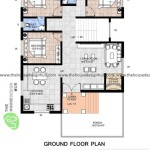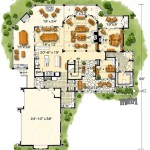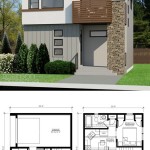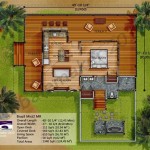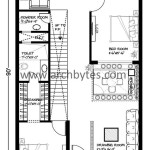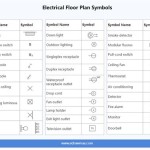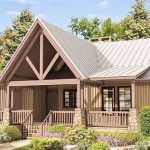Tiny Prefab House Plans: Maximizing Space and Efficiency
The surge in popularity of tiny homes reflects a growing interest in minimalist living, sustainability, and affordable housing solutions. Among the various approaches to small-space architecture, prefabricated (prefab) homes stand out for their efficiency, speed of construction, and precise engineering. Tiny prefab house plans offer a compelling blend of streamlined design, controlled manufacturing, and reduced environmental impact, making them an attractive option for individuals and families seeking compact and eco-conscious living spaces.
Tiny prefab houses are typically defined as dwellings under 600 square feet that are built off-site in a factory setting and then transported to the final location for assembly. The controlled environment of a factory allows for greater precision, reduced waste, and faster construction times compared to traditional on-site building methods. Prefab construction also facilitates the integration of sustainable materials and energy-efficient technologies, further enhancing the appeal of these compact homes. The design and planning phase is crucial, and understanding the nuances of tiny prefab house plans is essential for a successful project.
Understanding the Benefits of Tiny Prefab Construction
One of the primary advantages of choosing a tiny prefab house is the cost savings associated with reduced material usage and streamlined construction processes. The smaller footprint of a tiny home inherently requires less building material, leading to lower upfront expenses. Moreover, prefab construction minimizes waste by optimizing material usage and reducing on-site errors that can lead to costly rework. The controlled factory environment also allows for bulk purchasing of materials, further driving down costs. While the initial investment in a tiny prefab house may vary depending on the complexity of the design and the level of customization, it generally offers a more affordable alternative to traditional housing options.
Another significant benefit is the speed of construction. Because the majority of the building process takes place in a factory, the on-site assembly time is significantly reduced. This translates to a faster move-in date and less disruption to the surrounding environment. Traditional construction can be delayed by weather conditions, material shortages, and unpredictable labor schedules. Prefab construction mitigates these challenges by providing a controlled and predictable building environment. This expedited timeline is particularly advantageous for individuals who need to relocate quickly or who want to minimize the inconvenience of a lengthy construction project.
Sustainability is also a key consideration for many individuals exploring tiny prefab house plans. The reduced material consumption, waste minimization, and integration of energy-efficient technologies make tiny prefab homes an environmentally responsible choice. Many prefab manufacturers prioritize the use of sustainable building materials, such as reclaimed wood, recycled steel, and low-VOC paints and finishes. Furthermore, tiny homes inherently require less energy for heating and cooling, reducing their carbon footprint. Solar panels, rainwater harvesting systems, and composting toilets can be seamlessly integrated into the design of a tiny prefab house, further enhancing its sustainability profile.
Key Considerations When Choosing Tiny Prefab House Plans
Selecting the right tiny prefab house plan involves careful consideration of various factors, including budget, lifestyle, site conditions, and local building codes. It's important to establish a realistic budget that accounts for not only the cost of the prefab structure itself but also the expenses associated with site preparation, foundation installation, utility connections, and landscaping. The lifestyle of the intended occupants should also be considered, as the layout and features of the tiny home should accommodate their specific needs and preferences. For example, individuals who work from home may require a dedicated office space, while those who enjoy cooking may prioritize a well-equipped kitchen.
Site conditions play a crucial role in determining the suitability of a particular tiny prefab house plan. Factors such as soil type, topography, and access to utilities must be carefully assessed. The chosen foundation system should be appropriate for the site's soil conditions and designed to withstand local weather patterns. Utility connections, including water, sewer, and electricity, should be readily available and accessible. In some cases, off-grid solutions, such as solar power and rainwater harvesting, may be necessary or desirable. A thorough site assessment is essential to ensure that the tiny prefab house can be successfully installed and operated in the chosen location.
Compliance with local building codes and zoning regulations is paramount. Tiny homes are subject to the same building codes as traditional houses, and it's important to ensure that the chosen prefab house plan meets all applicable requirements. Zoning regulations may also impose restrictions on the size, location, and use of tiny homes. It's advisable to consult with local building officials and zoning administrators to confirm that the proposed tiny prefab house plan is permitted in the desired location. Failure to comply with building codes and zoning regulations can result in costly delays, fines, or even the forced removal of the tiny home.
Exploring Different Types of Tiny Prefab House Plans
Tiny prefab house plans encompass a wide range of styles, layouts, and features, catering to diverse tastes and needs. Some popular options include modular homes, panelized homes, and container homes. Modular homes are built in sections or modules that are then transported to the site and assembled on a foundation. Panelized homes are constructed from prefabricated wall panels that are assembled on site, offering greater design flexibility. Container homes are made from repurposed shipping containers, providing a unique and sustainable housing solution.
Within each of these categories, there are a variety of floor plans and design options to choose from. Some tiny prefab house plans feature open-concept living spaces, while others incorporate separate rooms for greater privacy. Loft areas are often used to maximize vertical space and create additional sleeping or storage areas. Outdoor living spaces, such as decks and patios, can extend the usable area of the tiny home and provide opportunities for relaxation and entertainment. The choice of finishes, fixtures, and appliances can also be customized to reflect the individual preferences of the homeowner.
The availability of prefabricated kits further enhances the accessibility of tiny prefab house plans. These kits typically include all the necessary materials and components for constructing the tiny home, along with detailed instructions. Prefabricated kits can be a cost-effective option for individuals who are comfortable with DIY projects, as they can save on labor costs. However, it's important to have the necessary skills and experience to assemble the kit correctly, or to hire a qualified contractor to assist with the construction process. The selection of the appropriate kit is also vital, because kit quality can vary widely, and choosing a reputable supplier is important to ensure structural integrity and long-term durability.
Ultimately, the best tiny prefab house plan is one that aligns with the individual's budget, lifestyle, and site conditions. Careful planning, thorough research, and collaboration with experienced professionals are essential for a successful tiny prefab home project. The potential benefits of reduced costs, faster construction, and enhanced sustainability make tiny prefab houses an increasingly attractive option for individuals seeking innovative and eco-conscious housing solutions.

Tiny Home Living By Kintner Modular Homes Builder Pennsylvania Custom Contractor

Cool Prefab Custom Tiny Houses And The Best Diy Cabin Plans Craft Mart

Small Prefab Mini House One Cabins

Mobile Tiny House Plan 25 M2 Modern Design

Pin On Small House Plans

Tiny Houses Plans Archives Craft Mart

The Best Prefab And Tiny Houses You Can Buy For Your Home In 2024

Livinghomes And Make It Right Introduce Affordable Green Prefab House Floor Plans Building A Container Home

Architect Designed Modern Green Prefab Tiny House Kit Home Ecohome

Free Prefab Tiny House Plans

